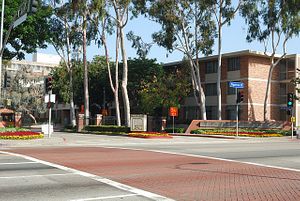The University of Southern California is renowned for many things: top-notch academic programs, excellence in athletics, and its location at the heart of Los Angeles, one of the most international cities in the world.
But the latter once again proved to be a major liability, not an asset, following the killing of a Chinese student near campus in late July, the third murder in three years after two students from China were gunned down in April 2012.
Ji Xinran, a 24-year-old engineering major, was walking home to his apartment when he was accosted by four Hispanic youths, including two juveniles, who proceeded to beat him with blunt instruments. Ji ran away from the gang only to be chased down and beaten for a second time. He finally made it back to his apartment, where he died.
Two years ago, two Chinese students were stopped by two black men while driving home to their residence near the USC campus. One was shot in the car, the other fled on foot only to be followed and shot four times while he was trying to call for help. One perpetrator pleaded guilty to the murders and is serving a life sentence while the other is still awaiting trial.
The murders of Qu Ming and Wu Ying, both also engineering students, spurred USC to boost its security on and near campus. But the killing of Ji has shown that there are limits to the university’s ability to keep its students safe and that Chinese students are continuing to be targeted by the criminal element in the area.
Founded in 1880, USC is one of the oldest private universities on the West Coast of the U.S. Its location of being just south of downtown Los Angeles historically had been an asset as the city underwent a metamorphosis from an outpost to a world-class destination.
But that’s changed rapidly in the last 50 years. After the Watts Riots of 1965, the so-called “white flight” began as middle-class families fled south to Orange County and the neighborhoods surrounding the USC campus – South Central L.A. – were taken over by low-income black, and later Latino, residents and soon became crime-infested, particularly during the 1980s and ‘90s when gang wars were rampant.
USC has sought to combat the problem by buying and gentrifying more land around its original campus and then essentially creating a bubble over it with beefed-up security. This coincided with the university’s ascension as an academic institution, as its standings skyrocketed and is now annually ranked in the top 25 in the U.S.
Part of USC’s success comes from its ability to court students from overseas. For the 12th year in a row, USC boasts more international students than any other American institution, with 9,840. Its largest contingent, accounting more than a third of all international students at 3,771, comes from China.
Chinese students are drawn to USC for several reasons other than its academic excellence. Being in L.A. is an advantage, both in terms of proximity to China and also the presence of a huge local Chinese population, where Chinese food, grocery items, and even newspapers are readily available. USC is also renowned for fostering school spirit, galvanized by its renowned football team and the two-finger “Fight On” salute, something many Chinese students have embraced.
But some of those students are having second thoughts after Ji’s murder.
“I love USC, but I feel a little scared after this,” a Chinese student attending USC told The Diplomat on condition of anonymity for fear of worrying his parents. “Two years ago they told us it’s an isolated incident and we believed that. But I truly think that (as Chinese students) we’re being targeted.”
The image and reality of Chinese students being law-abiding and docile no doubt make them tempting preys to the criminal element surrounding the campus. And though USC’s tuition is expensive for everyone, the Chinese are especially stereotyped as wealthy and thus become targets of robberies – as it was the motive for both of the recent murder cases.
There’s also naiveté. The frequent occurrence of violent crime in many major American cities, as well as the ubiquity of firearms, simply is a foreign concept to many Chinese students. The murder rate in the area around USC is nearly four times the U.S. national average according to the latest data available.
Writing in her blog, Mary Cummins describes why international students are particularly vulnerable based on her own experience as a 1980s USC graduate:
I think foreign students are at a greater disadvantage than local American students. … Most didn’t speak English. They did not know the area was bad. I had to tell them not to walk around there. I had to teach them very basic things about safety. They’d get robbed at the ATM’s as they would count the bills at the machine. They didn’t lock up their bicycles. They’d wear their clothes from their country with jewelry and were instant targets. I told them to wear regular jeans and shirts and no jewelry.
Ji’s murder will serve as an unwelcome wake-up call for many Chinese students at USC. Many of China’s best and brightest attend college in the U.S., and until now, a large number have flocked to USC. But as 400-plus – including Ji’s mother – gathered to mourn the passing of the Shanxi native, sorrow is beginning to give way to anger.
“What is it that they say in America?” the anonymous Chinese student asked rhetorically, then switching to English, answered, “buyer beware.”
































